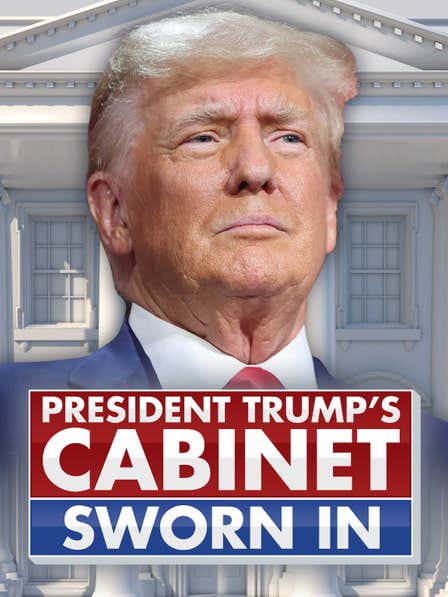As the political landscape shifts and anticipation builds, the world awaits the unveiling of Donald Trump's 2025 Cabinet picks. With a promise to reshape America’s future, these selections are pivotal in setting the tone for his administration. Speculations abound regarding who will be chosen to fill these influential roles, as they hold the potential to significantly impact national policies and international relations.
The choices for Trump's cabinet members not only reflect his administration's priorities but also signal the direction he intends to steer the country towards. As the President-elect moves forward with his nominations, each decision carries weight, shaping the governance framework that will define his presidency. This article delves into the notable figures being considered, offering insights into their backgrounds and anticipated contributions to the upcoming administration.
Key Figures Leading the Charge: Trump's Strategic Appointments
Donald Trump's new administration is poised to include several architects of Project 2025, despite his previous disavowal of the controversial initiative during the campaign trail. These individuals, known for their strategic vision and policy expertise, are set to play crucial roles in shaping the nation's future. Their inclusion signals a shift from campaign rhetoric to actionable governance, promising significant changes across various sectors.
Project 2025, often criticized for its aggressive reform agenda, finds its proponents now at the helm of key governmental positions. This transition underscores Trump's commitment to implementing sweeping reforms that align with his vision for America. The appointment of such figures suggests a focused effort to overhaul existing systems and introduce innovative approaches to longstanding issues.
As these appointments take shape, the administration aims to leverage the diverse experiences and specialized knowledge of its members. By assembling a team committed to transformative change, Trump seeks to address complex challenges and drive progress in areas critical to the nation's prosperity and security.
Navigating Education Reform: Linda McMahon's Confirmation Journey
Linda McMahon faced rigorous scrutiny during her confirmation hearing as the nominee for Education secretary. Her responses to tough questions from Democrats demonstrated her resolve and alignment with President Trump's educational reform agenda. McMahon's stance on shrinking, or even eliminating, certain aspects of the department reflects a broader strategy to streamline federal education initiatives.
McMahon's approach emphasizes efficiency and effectiveness, aiming to redirect resources towards programs that yield tangible results. Her vision aligns with the administration's goal of reducing bureaucratic overhead while enhancing educational outcomes. This perspective has drawn both support and criticism, highlighting the polarizing nature of her nomination.
As the confirmation process unfolds, McMahon's ability to articulate her plans and garner bipartisan support will be crucial. Her success in this role hinges on her capacity to implement meaningful reforms that resonate with educators, parents, and students alike, ultimately contributing to a more robust and equitable education system.
Evaluating Senate Dynamics: Republican Loyalty Tested
Donald Trump's cabinet picks have put Senate Republicans to the test, challenging their loyalty and commitment to his administration's agenda. Key nominations, including those of RFK Jr., Kash Patel, and Tulsi Gabbard, have sparked intense debates and highlighted the complexities of confirming controversial figures. Each nominee brings unique qualifications and controversies that Senate committees must carefully consider.
These confirmation hearings serve as a litmus test for the administration's ability to secure support for its appointees. The proceedings reveal the intricate balance between party loyalty and public perception, as senators weigh the implications of endorsing candidates whose ideologies may diverge from mainstream acceptance. This dynamic underscores the importance of building consensus and fostering dialogue within the legislative branch.
As the confirmation process continues, the outcomes will shape the administration's operational capacity and influence its policy implementation efforts. Successful confirmations can strengthen the administration's mandate, enabling it to execute its vision effectively. Conversely, rejections may hinder progress, necessitating alternative strategies to achieve desired objectives.
Trump's Visionary Team: A Blend of Experience and Innovation
Donald Trump's 2025 cabinet features a diverse array of individuals, each bringing distinct expertise and perspectives to their respective roles. Notable appointments include Marco Rubio as Secretary of State, Scott Bessent as Secretary of the Treasury, and Pete Hegseth as Secretary of Defense. These selections highlight Trump's focus on assembling a team capable of addressing multifaceted global and domestic challenges.
The inclusion of Pam Bondi as Attorney General and Doug Domenech as Interior Secretary further exemplifies the administration's commitment to legal integrity and environmental stewardship. By tapping into the talents of seasoned professionals and emerging leaders, Trump aims to create a cohesive unit dedicated to advancing the nation's interests. This approach ensures a comprehensive strategy that addresses both immediate concerns and long-term goals.
Additionally, Susie Wiles breaking barriers as the first woman White House Chief of Staff symbolizes a new era of inclusivity and empowerment within the administration. Such appointments underscore Trump's dedication to fostering diversity and promoting gender equality at the highest levels of government. Together, these individuals form a formidable team poised to lead America into a prosperous and progressive future.

